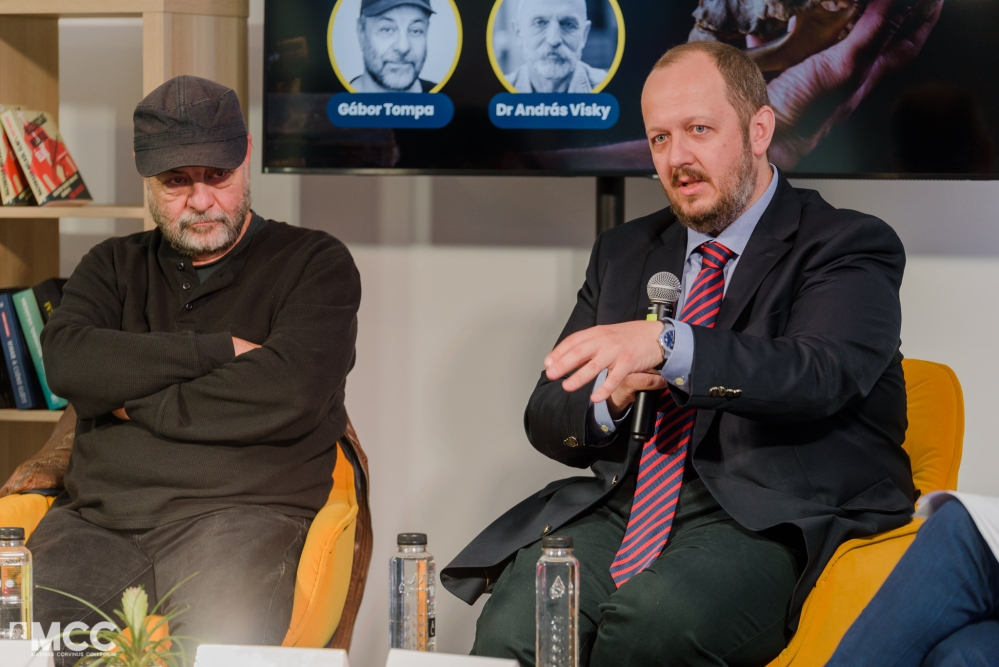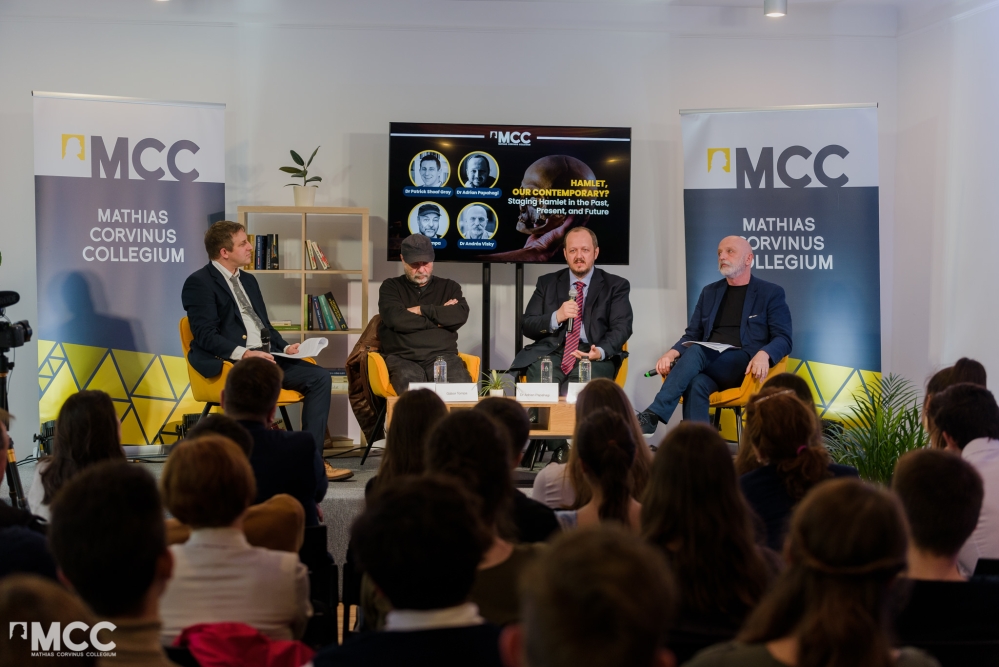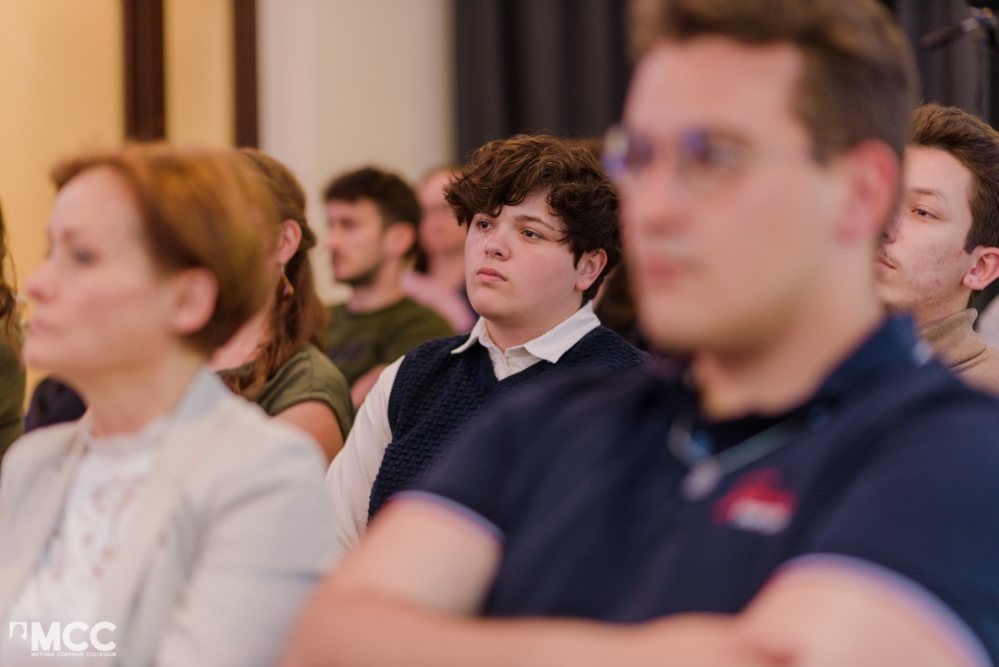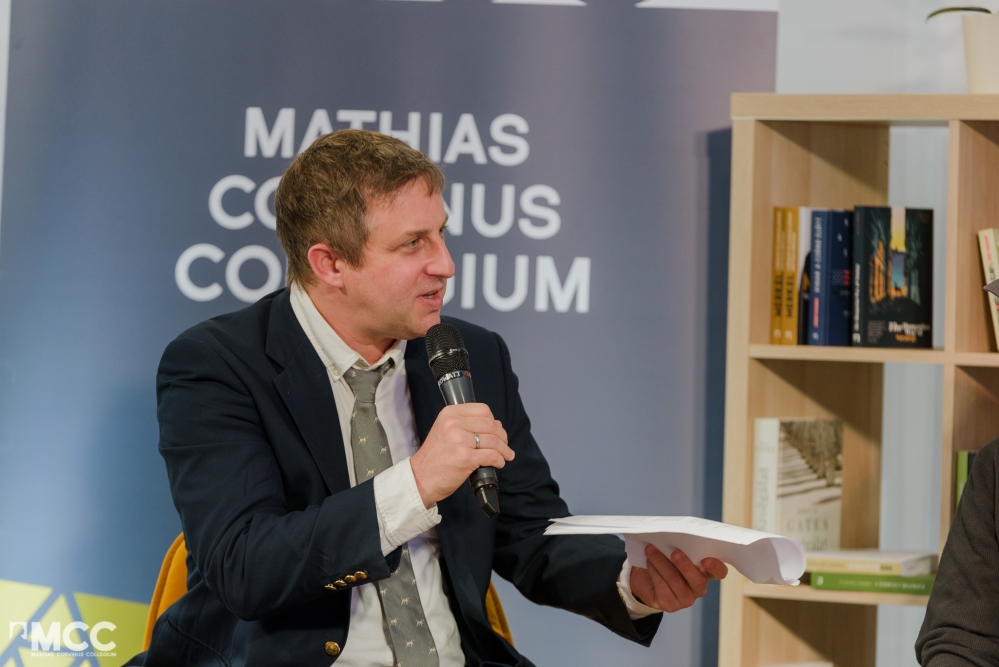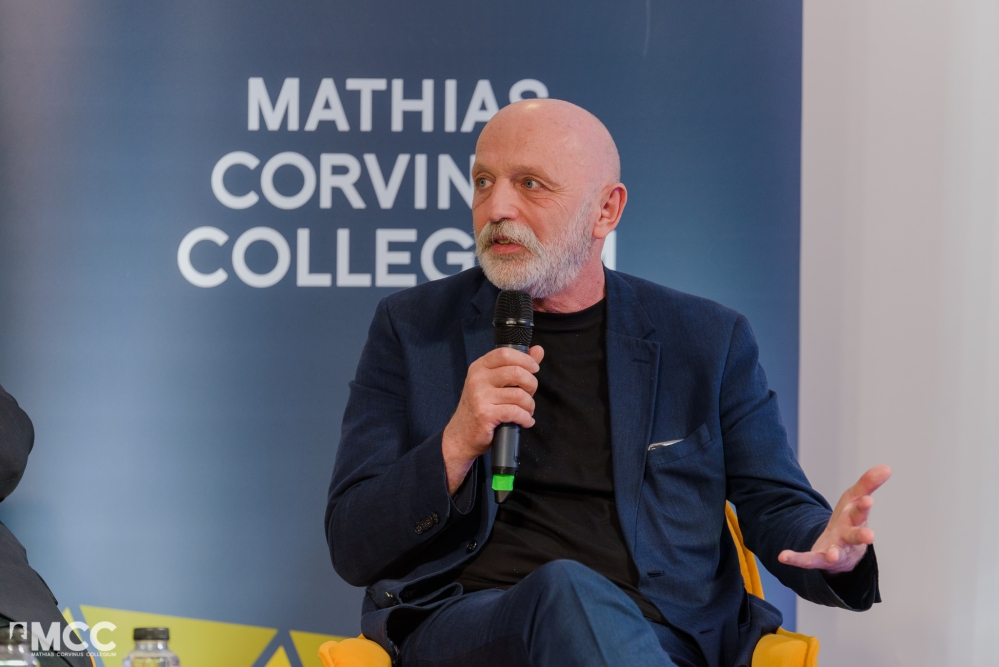Reading time: 3 minutes
More than 400 years after it was written, Shakespeare's Hamlet has been given a new look at the Hungarian Theatre of Cluj. Dr. Patrick Shoaf Gray, Dr. Adrian Papahagi, Gábor Tompa and Dr. András Visky discussed the play's uniqueness, the meeting of past and present, and the creative adaptation at a public roundtable at the Mathias Corvinus Collegium (MCC) on Monday, 30 May.
At the discussion titled Hamlet, Our Contemporary? Staging Hamlet in the Past, Present, and Future, held at the MCC's regional center in Kolozsvár, our guest speakers talked about the contemporary reinterpretation of Shakespeare's best-known tragedy, the changes, hidden allusions and symbolism in the play. The discussion was moderated by Dr. Patrick Shoaf Gray, MCC Visiting Fellow, Associate Professor of English Studies and Director of Liberal Arts (Durham University). The guest speakers were Dr Adrian Papahagi, Professor of English Literature (Babeș–Bolyai University), director of the Centre for the History of the Book and Texts (CODEX), Gábor Tompa, director, poet and university professor (University of California), director of the Hungarian Theatre of Cluj, president of the Union of European Theatres, and Dr András Visky writer, playwriter, dramaturge, Professor of Performance Studies (Babeş–Bolyai University, Károli Gáspár University, Budapest), Artistic Director of the Hungarian Theatre of Cluj.
Gábor Tompa is staging Hamlet for the fourth time, the second time in Kolozsvár, and each time he has done it differently. He believes that the current production has a stronger impact, as the play was approached from the perspective of the younger generation: it was necessary to get to the truth through consumer society, media manipulation, and layers of lies. The participants first touched on the meaning of the simple but telling set design of the play, whose main elements also indicate the changing relationships between the characters.
Dr Adrian Papahagi pointed out that the play, which is more than 400 years old, was written at a time of conflict between Catholicism and Protestantism. The professor highlighted the specificities of the two denominations and then described the symbolism of purgatory, the spirit, the locations and the names, concluding that the play is centered on providence and faith.
"The concept comes first, and that creates the text," Dr. András Visky said about the changed elements, highlighted and omitted parts of the original piece, adding, "If you don't put yourself in the text, it becomes boring, you don't have to be obedient, you have to get lost in it." For example, this time we get a glimpse into the childhood of Hamlet and Ophelia, further immersing ourselves in the tragedy.
Gábor Tompa shared that as he has young children in their twenties, he is particularly interested in the Hamlet of today's generation, how they see the future, the world, how they make decisions: "As parents, I am interested in this hopeful, valuable young generation, who represent hope in this complicated world."
"We had a special event at the MCC Center in Kolozsvár. This roundtable discussion is a good example of the MCC's educators and local professionals coming together with the community," said Botond Talpas, general director of MCC Transylvania. He added that, in addition to the meaningful Hungarian-language lectures held throughout Transylvania, the English-language discussions in Kolozsvár are also a great success, providing an opportunity for a wider audience to get to know MCC. One such event is the Transylvania Lectures series, which brings together distinguished speakers on key social issues on a monthly basis.
